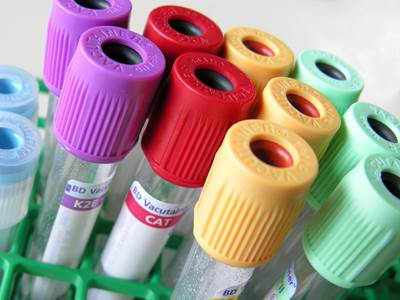Laboratory Tests Explained

Looking at the results of laboratory tests done on your pet can be very confusing, overwhelming and at times, even frightening. As your pet's caregiver, it is important for you to have a general understanding of laboratory tests and what their results mean. This information can be valuable when it comes to deciding medical treatment options that are important as well as available for your pet.
Generally, in order to conduct a test a sample of your pet's blood and/or urine is collected. Once collected, it can be stored in various kinds of tubes to help preserve the sample and provide the laboratory technicians with a clean specimen.
So what does it mean when your veterinarian says she needs to run some blood work on your pet? Blood work (pre-surgical or otherwise) is usually a combination of a complete blood count (CBC) and a blood chemical analysis. Blood work is a basic evaluation tool. It also helps your veterinarian diagnose a pet's disease or monitor the progression of a disease. The cellular elements of the blood are examined in the CBC. The CBC determines the number of erythrocytes (red blood cells), the number and type of leukocytes (white blood cells), the number of thrombocytes (platelets), the hemoglobin level and the hematocrit (packed cell volume or PCV). Erythrocytes carry oxygen throughout the body. Leukocytes fight infection and are part of the immune system. Platelets are clotting proteins and can indicate how fast your pet's blood clots; slow clotting can be a serious problem. A CBC can tell your veterinarian if your pet has an unusual number of red blood cells, white cells or platelets. The numerical values for these cells can indicate if your pet's health is improving or deteriorating.
The results of a chemistry panel can indicate how well your pet's kidney and liver are functioning and the level of electrolytes in the blood. The chemistry panel usually includes the following tests:
• Alkaline phosphatase- Used extensively as a tumor marker, it is also present with liver injury, bone injury, pregnancy, or skeletal growth (elevated values). Growing animals have normally higher levels of this enzyme. Low levels are sometimes found in protein deficiency, malnutrition and a number of vitamin deficiencies.
• Alanine transaminase- Increased levels are seen in liver damage, kidney infection, chemical pollutants or myocardial infarction.
• Bilirubin (total)- Elevated in liver disease, hemolytic anemia, low levels of exposure to the sun and toxic effects to some drugs. Decreased levels are seen in people with an inefficient liver, excessive fat digestion and possibly a diet low in nitrogen bearing foods.
• Blood urea nitrogen- Increases can be caused by excessive protein intake, kidney damage, certain drugs, low fluid intake, intestinal bleeding, exercise, or heart failure. Decreased levels may be due to a poor diet, malabsorption, liver damage or low nitrogen intake.
• Creatinine- Low levels are sometimes seen in kidney damage, protein starvation, liver disease, or pregnancy. Elevated levels are sometimes seen in kidney disease due to the kidneys job of excreting creatinine, muscle degeneration and some drugs involved in impairment of kidney function.
• Glucose- Elevated in diabetes, liver disease, obesity, and pancreatitis due to steroid medications, or during stress. Low levels may be indicative of liver disease, overproduction of insulin or hypothyroidism.
• Total protein- Decreased levels may be due to poor nutrition, liver disease, malabsorption, diarrhea or severe burns. Increased levels are seen in lupus, liver disease, chronic infections, leukemia, etc.
• Albumin- High levels are rarely seen and are primarily due to dehydration. Low levels are seen in poor diets, diarrhea, fever, infection, liver disease, inadequate iron intake, third-degree burns and edemas and hypocalcemia.





